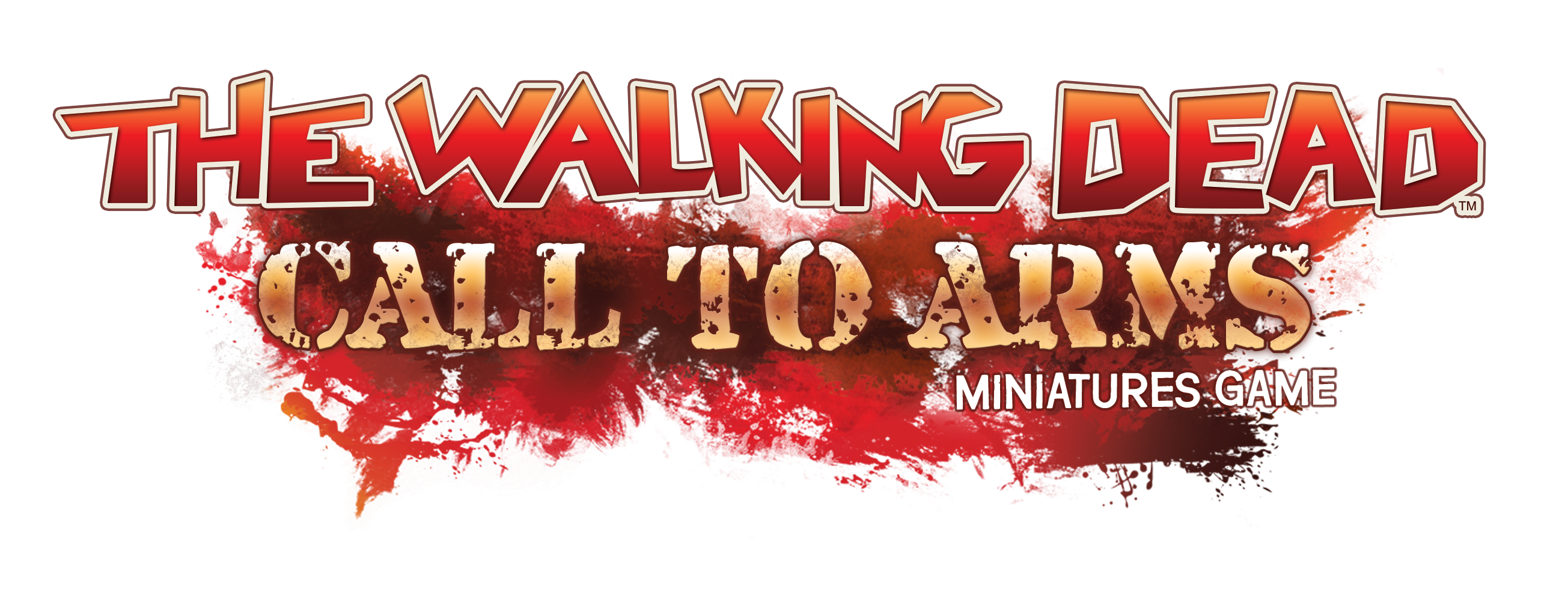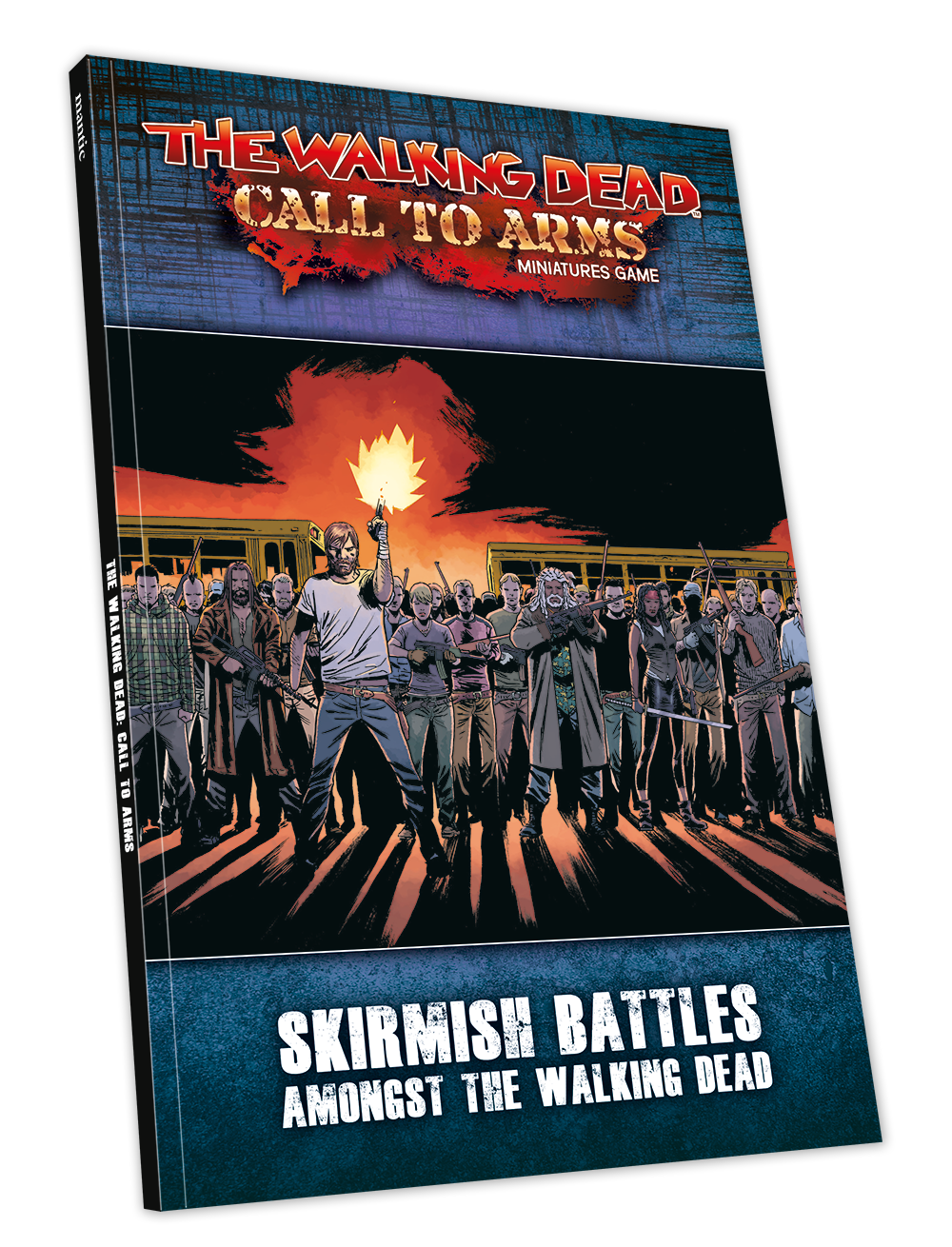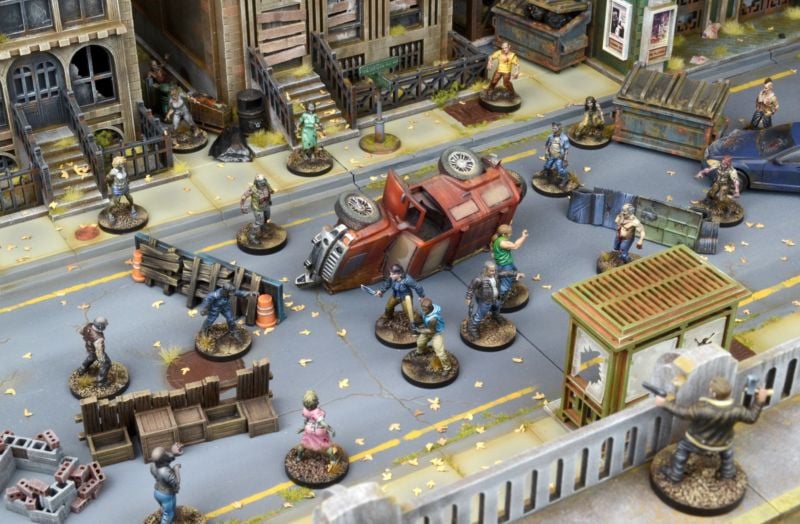Mark Latham talks The Walking Dead: Call to Arms
25th Jun 2019
Rob Burman

Hope you're enjoying Call to Arms Week so far. Yesterday Ronnie gave a brief overview of the game and today we're delving deeper with designer Mark Latham. After working on All Out War, Mark has been working on Call to Arms for behind the scenes for some time.
We took the opportunity to ask Mark a few questions about the new game and what fans can expect from Call to Arms.
What’s it been like to return to The Walking Dead universe?
In
many respects, I never really left. Not only am I a big fan, and therefore keep
up to the date with the comics series, but All Out War is one of the few games
of mine that I actually play regularly for fun (I know right? Games designers
actually playing games and painting miniatures? Preposterous!). I’d been
expecting the call to write some more character rules for AoW, but it turned
out Ronnie had something bigger in mind, and I’m very pleased with the result.
Can you briefly explain the concept behind Call to
Arms?
It
started out as a fast-and-loose idea to play bigger games, but we’re not really
saying this is now some kind of mass battle system. What we have here is a
pick-up-and-play set, with a variety of finely balanced ‘battle’ type
scenarios. Rather than theme a survivor group around a narrative, Call to Arms
players will have real freedom to choose a force, customise it, and pit it against
their opponent. It can be played really competitively if you want to, and a lot
of the randomness has been stripped away to centre the gameplay on
survivor-vs-survivor conflict.
Do Call to Arms and All Out War share some key
concepts? If people have played All Out War, will they feel on familiar
territory for Call to Arms?
The
basic dice mechanics are the same, and even a lot of the keywords and stats, so
existing players will definitely get a headstart. There are lots of
distinctions of course – such as weapon ranges and the way cover works – that
aren’t there to trip up existing players, but rather to make you re-evaluate
how you play. The old tactics might not work any more, and that’s okay – this
is a real tactical shift for the game.

Was it difficult to come up with the different ways
Survivors work together? Any advice for building gangs?
Even
though Call to Arms is light on narrative, I still took my cues from the source
material. I was really keen that every Faction should have a key special rule
that universally affects how it plays. So if you fight for Rick Grimes, you all
pull together to defend each other, making them a tough nut to crack. The
Governor rules through fear, and he has a whole bunch of poor-quality
foot-soldiers (with really good guns) who don’t really want to fight for him
unless his lieutenants whip them into shape. What I’d say is, you should build
your faction around the group leader – the leaders have Special Orders,
allowing them to influence gameplay in unique ways. Once you’ve worked out the
optimum way of using the boss, your choice of followers will be crucial in
enacting the master plan.
Will the Walkers still pose a threat in Call to
Arms?
That’s
a great question, and it’s one of the things we wrestled with. I mentioned
earlier we wanted to shift the focus from Walkers to Survivors, so we got rid
of random Events, and even the Threat tracker – but how to make those Walkers
relevant? It’s much like the comic-book storyline once the war kicks off –
Walkers used to be really dangerous, but once the factions learn how to manage
them, they become just a nuisance. With one exception: Herds. Whenever a herd
forms, all the heroes sit up and take notice, because they’re a real force of
nature that’s hard to stop. And that’s where we got to: individual Walkers
aren’t all that scary any more if you manage them well, but if you let them
form a Herd, they will trample you to dust.

What were the challenges making the move from All
Out War to Call to Arms?
A
game like this requires a slightly more competitive mindset – you don’t have to
play it in any kind of tournament setting, but you have to understand as a
designer that the rules will be used that way. That means having one eye on the
metagame, and making sure combos are effective but not overpowered. All Out War
was, in many respects, self-policing. Lots of players just wanted to use their
favourite characters, and equip them with ‘canon’ upgrades. In Call to Arms,
that’s just one approach to faction-building, and there are many others. Now,
I’m a designer of some experience, but I’m no tournament player, so sometimes
I’m blind to the ‘rules lawyer’ side of wargaming. Thankfully, I had the
dedicated Mantic Rules Committee to call upon. Those guys can sniff out a
filthy combo at a hundred paces, and they’ve really helped me look at this
rules set with a laser focus.
What
gang are you most looking forward to using? This can be a gang we haven’t made
yet.
I’m in the middle of painting up my Atlanta and Woodbury groups, but to be honest I’ve got one eye on the future. I’ve already done one new faction which will be out hot on the heels of the rulebook. But my answer to this is twofold: As a player, I’m dying to get the Kingdom on the tabletop – a cavalry force in TWD? How cool is that? But as a designer, I’m really looking forward to the Whisp[REDACTED BY ORDER OF CRAZY BOBBY!!!]
All this week we’ll be delving further into Call to Arms and the first products will be going up for pre-order this Friday. Tune in tomorrow for a deeper look at some of the new gameplay elements.



